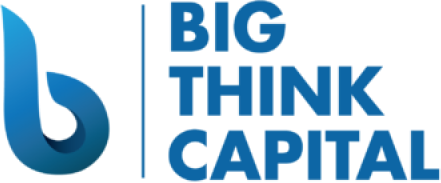Leveraging SBA Loans and Working Capital Advances to Navigate Inflation Trends in 2025: Comprehensive Guide for Small Business Owners
Estimated Reading Time: 7 minutes
- Understand the distinct advantages of SBA loans and working capital advances.
- Plan for economic uncertainty with a diverse financial strategy.
- Engage with experts to optimize funding solutions for your business.
Table of Contents
- Understanding the Current Economic Landscape
- The Role of SBA Loans in Inflation Management
- The Advantages of Working Capital Advances
- Combining Financing Solutions for Maximum Impact
- Navigating Inflation Trends in 2025
- Conclusion
- FAQ
Understanding the Current Economic Landscape
Inflation has been a significant concern for small businesses over the past few years, driven by supply chain disruptions, rising energy costs, and evolving consumer demand. According to recent reports by the Federal Reserve, inflation rates have shown signs of stabilizing but remain higher than pre-pandemic levels. This economic uncertainty has led many small business owners to consider financing options that can provide necessary capital while safeguarding their operations.
The Role of SBA Loans in Inflation Management
SBA loans, backed by the U.S. Small Business Administration, offer small businesses an invaluable resource for funding. These loans are particularly beneficial during inflationary periods due to their favorable terms and conditions.
Key Features of SBA Loans
- Lower Interest Rates: SBA loans generally come with lower interest rates compared to conventional loans. This can mitigate the cost of borrowing, allowing business owners to maintain their cash flow even during inflation.
- Longer Repayment Terms: With repayment periods extending up to 25 years for real estate or 10 years for working capital, SBA loans can ease the financial burden on small businesses.
- Flexible Use of Funds: SBA loans can be utilized for a variety of purposes, including purchasing equipment, refinancing existing debts, and expanding operations, making them a flexible solution for diverse funding needs.
Practical Insights for Business Owners
- Assess Your Needs: Before applying for an SBA loan, evaluate your current financial situation. Identify specific funding needs, whether for equipment upgrades, inventory purchase, or covering operational costs.
- Prepare Documentation: SBA loans require detailed documentation. Ensure that your business plan, cash flow statements, and financial projections are accurate and updated to improve your chances of approval.
- Engage with a Partner: Working with a knowledgeable broker like Big Think Capital can help you navigate the complexities of the application process, providing insights and guidance tailored to your business needs.
The Advantages of Working Capital Advances
In addition to SBA loans, working capital advances present another feasible option for small businesses looking to alleviate short-term financial pressures caused by inflation.
What are Working Capital Advances?
A working capital advance is a type of funding that provides immediate cash flow based on future credit card sales or receivables. This flexibility allows businesses to manage day-to-day expenses without the lengthy approval process typical of traditional loans.
Key Benefits of Working Capital Advances
- Quick Access to Funds: Most working capital advances can be approved within days, making them a reliable source of financing when time is critical.
- Repayment Flexibility: Repayments are typically deducted as a percentage of daily credit card sales, providing a buffer during months of lower sales.
- Minimal Documentation Requirements: The application process is less stringent than traditional loans, allowing businesses to access funds quickly without extensive paperwork.
Practical Insights for Business Owners
- Evaluate Cash Flow Needs: Consider how working capital advances can fill gaps in cash flow, especially during peak operational periods when expenses may surge due to inflation.
- Monitor Sales Performance: Since repayments are tied to sales, ensure you have a strategy in place to monitor sales performance closely. A dip in sales could impact your ability to meet repayment obligations.
- Use Responsibly: While working capital advances can alleviate immediate financial stress, they should be used responsibly. Avoid over-reliance on advances to prevent a cycle of debt.
Combining Financing Solutions for Maximum Impact
For small businesses, a combination of SBA loans and working capital advances can prove to be an effective strategy for managing inflationary pressures. By leveraging both financing types, business owners can create a robust financial strategy that allows them to invest in growth while maintaining operational stability.
Crafting Your Financial Strategy
- Financial Forecasting: Conduct a thorough analysis of your business’s financial health. Include projections for cash flow, sales trends, and potential areas for expansion or investment.
- Set Priorities: Determine which expenses are critical and require steady funding versus those that can be temporarily managed through working capital advances. This prioritization will inform which financing option to pursue first.
- Diversify Your Funding Sources: Relying on one form of financing can create risk. Diversify your funding options to ensure you are prepared for price fluctuations and economic uncertainty.
Navigating Inflation Trends in 2025
In 2025, the inflation landscape will likely continue to shift. Business owners need to stay informed of economic trends, adapt to changing market conditions, and proactively manage their finances. By utilizing the right funding options, small businesses can not only survive but thrive in this dynamic environment.
Key Takeaways
- Understand the Financing Options: SBA loans and working capital advances offer distinct advantages for small businesses in an inflationary economy. Familiarize yourself with both options to decide the best fit for your needs.
- Plan for Uncertainty: Develop a robust financial plan that incorporates diverse funding sources to manage unforeseen economic fluctuations effectively.
- Engage with Experts: Partnering with experts at Big Think Capital can provide invaluable insights into securing the appropriate funding for your business, tailored to navigate the complexities of the current economic landscape.
Conclusion
As a business owner in 2025, navigating inflation trends requires access to reliable financial resources. Whether you choose an SBA loan for long-term stability or a working capital advance for immediate cash flow needs, understanding and leveraging these financing options is essential.
To learn more about how Big Think Capital can help your business secure the funding needed to thrive amidst economic challenges, visit us at bigthinkcapital.com or consult with one of our funding experts today. Your financial resilience starts here.
FAQ
1. What is the purpose of SBA loans?
SBA loans are designed to help small businesses gain access to necessary funding at lower interest rates and more favorable terms.
2. How quickly can I get a working capital advance?
Most working capital advances can be approved within days, providing quick access to funds for urgent financial needs.
3. What documents are required for an SBA loan application?
Documentation typically includes a business plan, cash flow statements, personal and business tax returns, and financial projections.
4. Can I use a working capital advance for any purpose?
Yes, working capital advances can be used for covering operational costs, purchasing inventory, or other necessary business expenses.
5. How can I ensure that I use funding responsibly?
Develop a clear financial strategy, monitor your cash flow diligently, and avoid over-reliance on short-term funding solutions.






